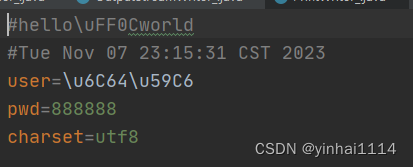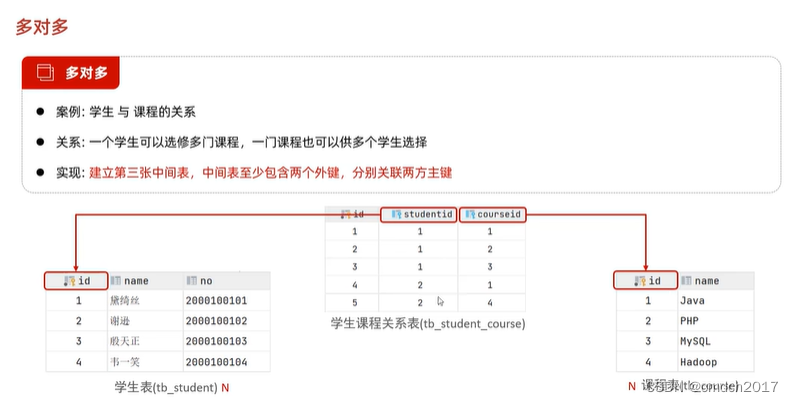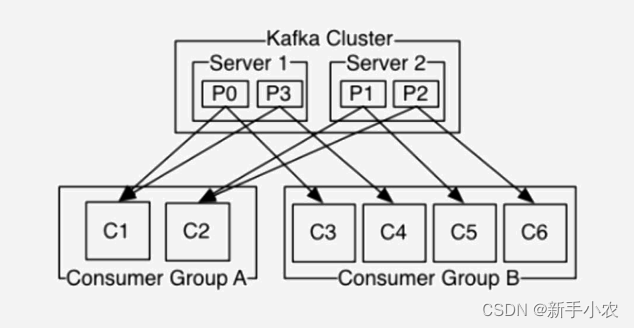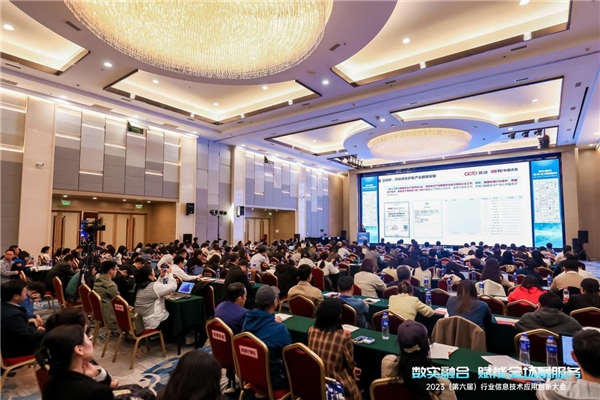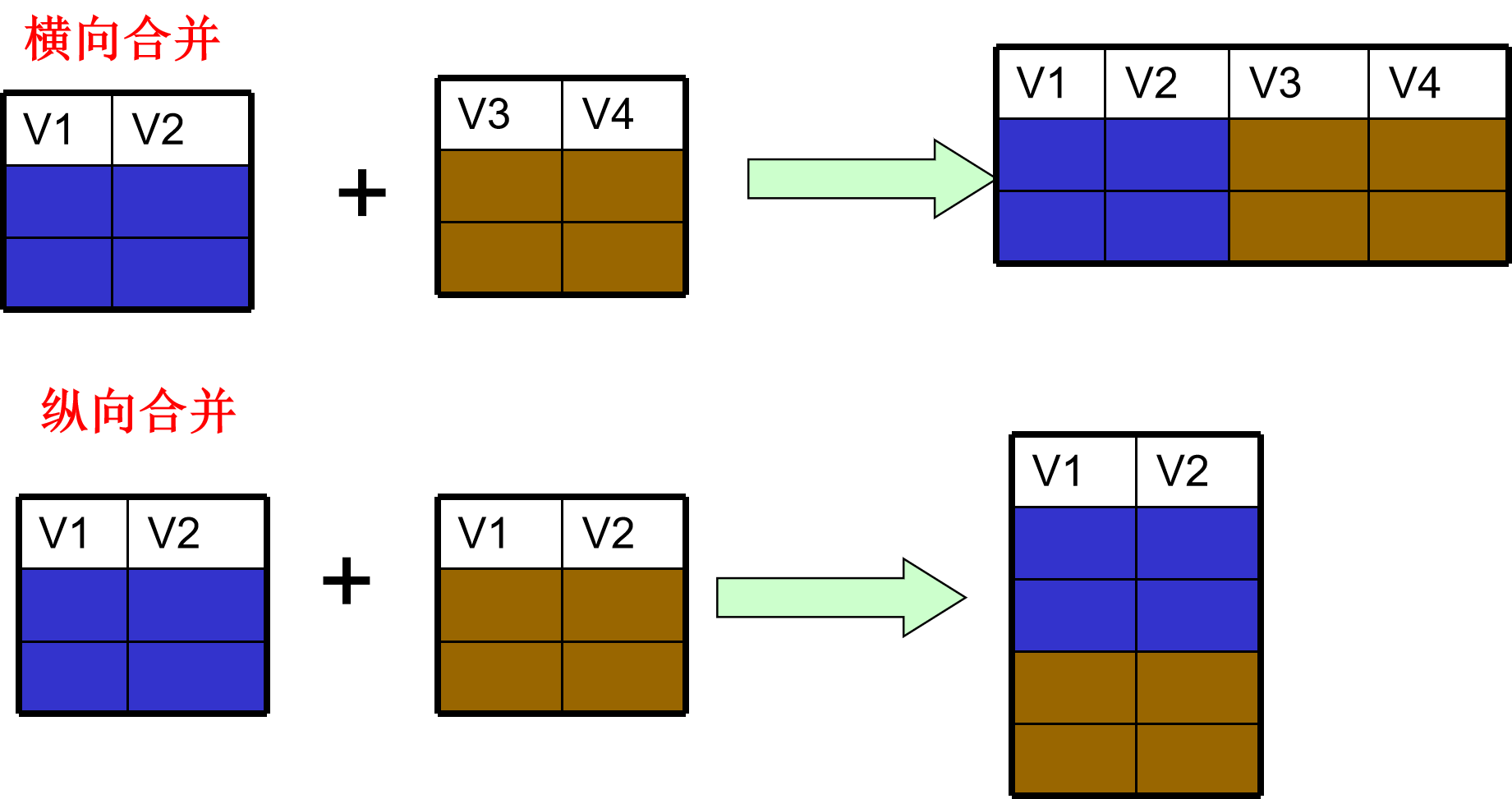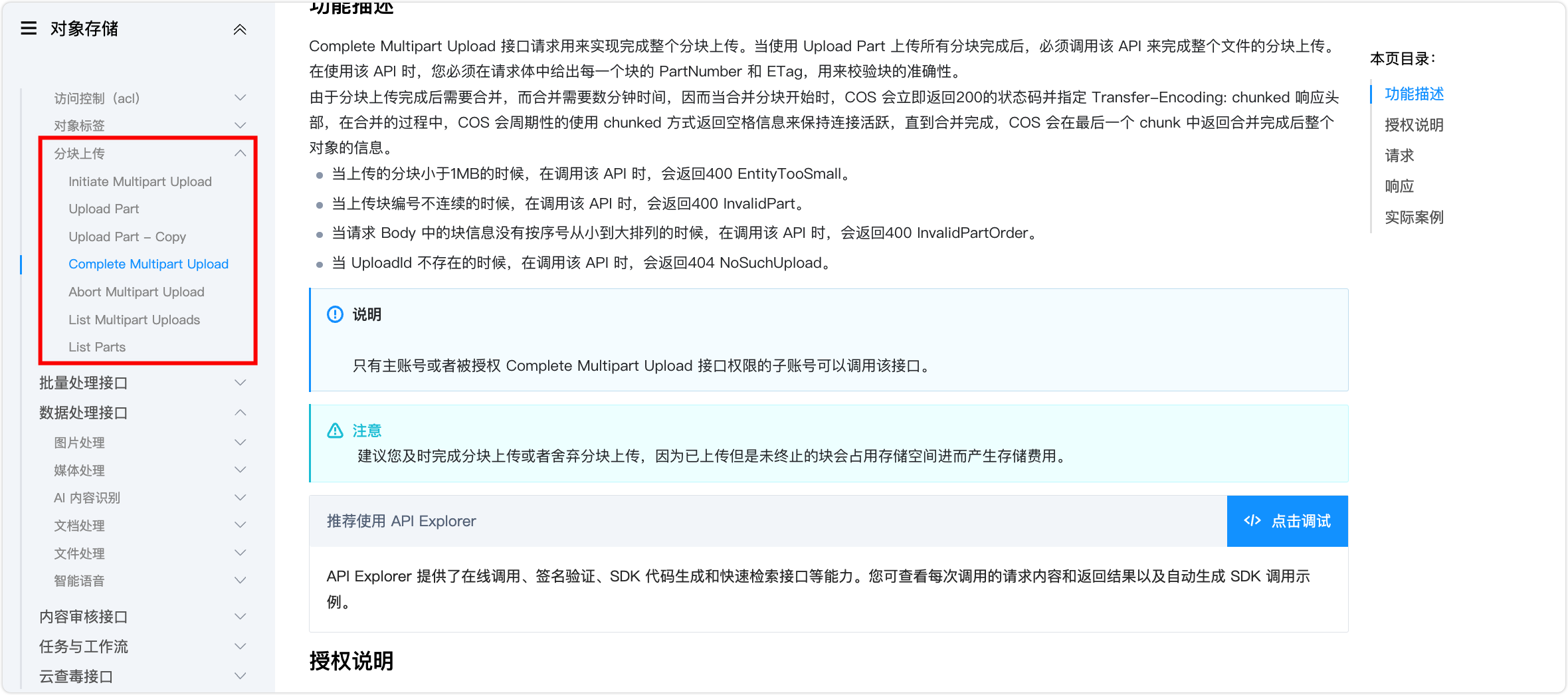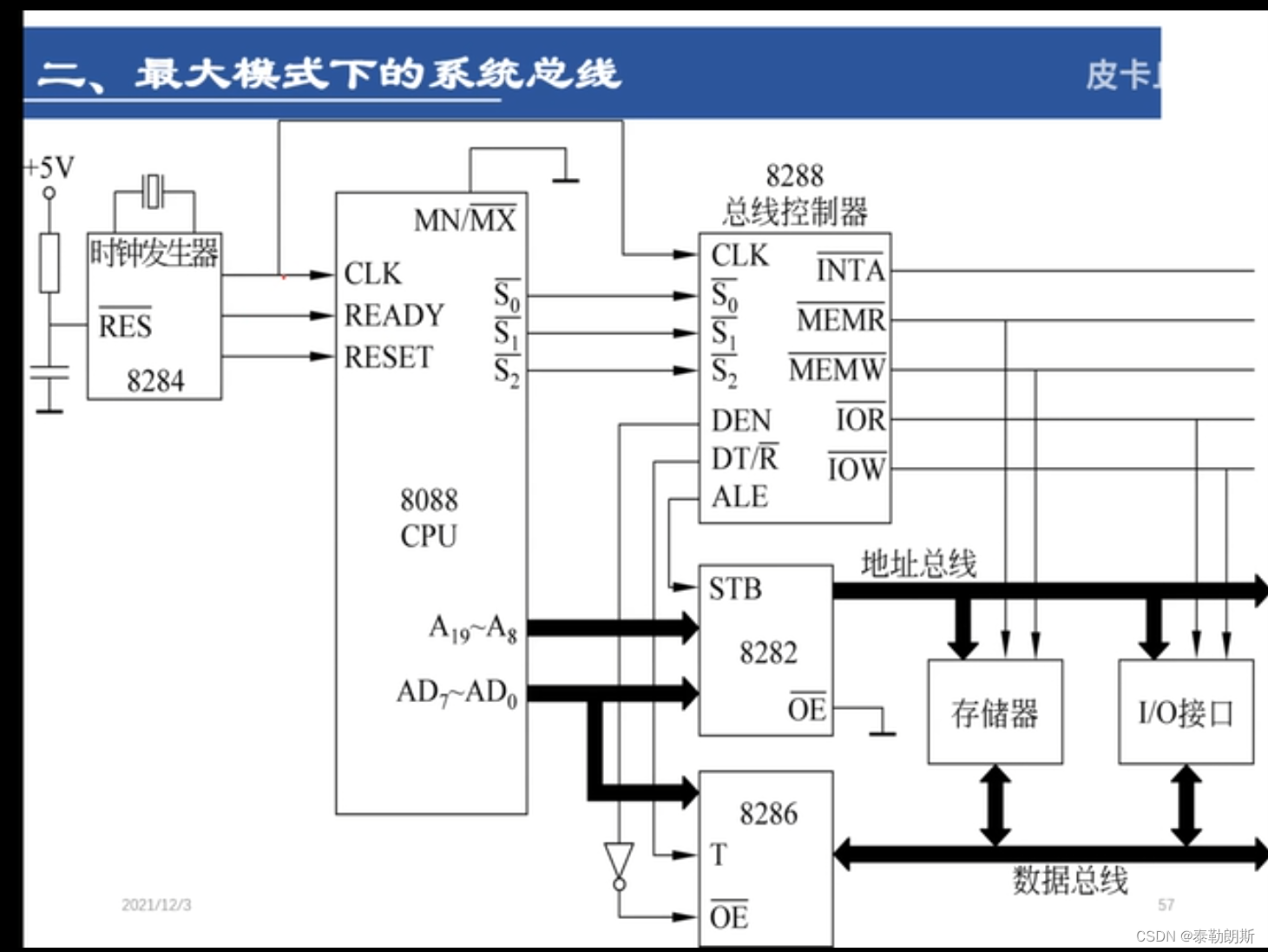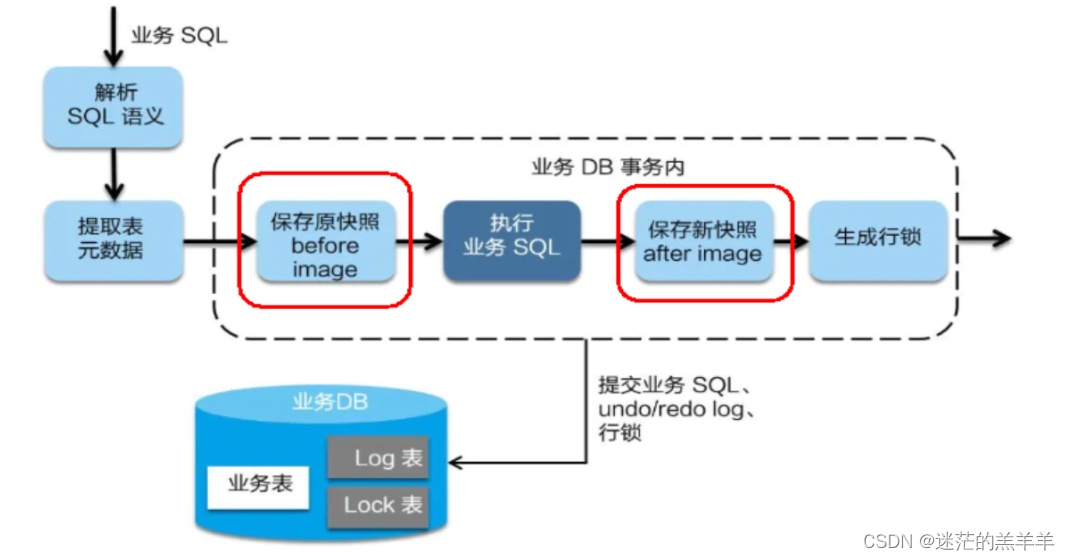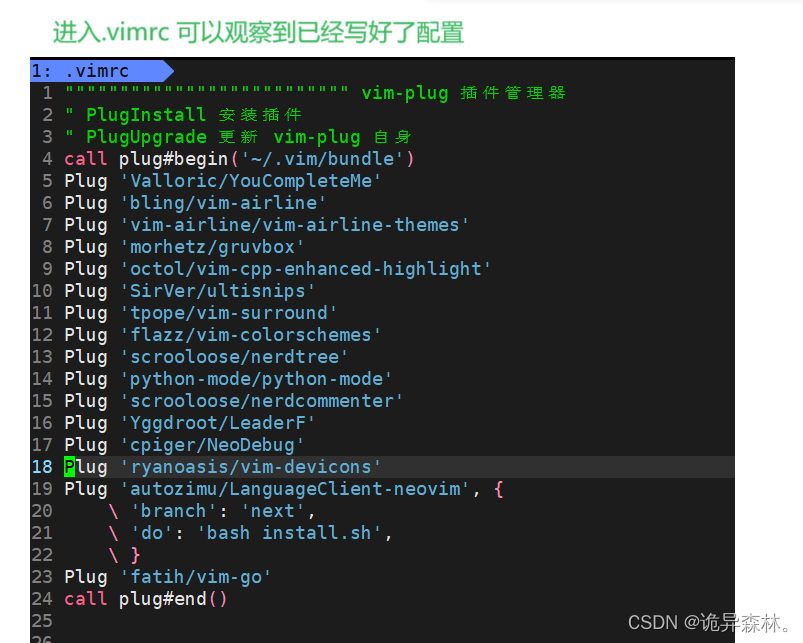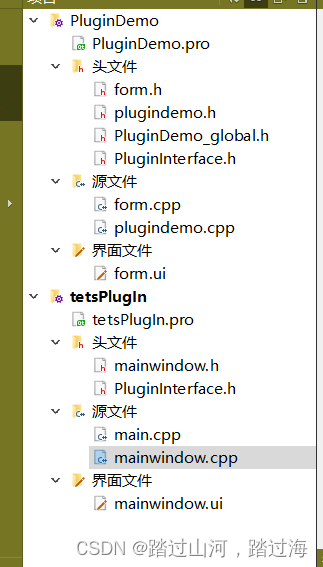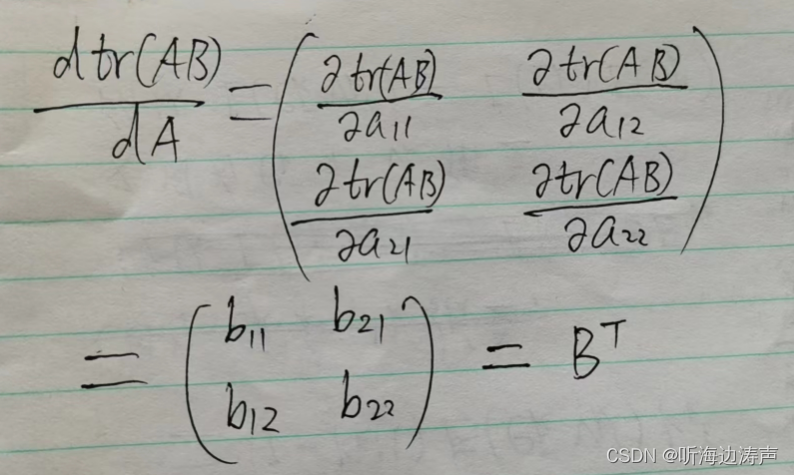项目代码
https://github.com/yinhai1114/Java_Learning_Code/tree/main/IDEA_Chapter19/src/com/yinhai
文件
一、文件,流
文件,对我们并不陌生,文件是保存数据的地方,比如大家经常使用的word文档,txt文件,excel文件..都是文件。它既可以保存一张图片, 也可以保持视频,声
文件在程序中是以流的形式来操作的

流:数据在数据源(文件)和程序(内存)之间经历的路径
输入流:数据从数据源(文件)到程序(内存)的路径
输出流:数据从程序(内存)到数据源(文件)的路径
二、常用的文件操作
1.创建文件对象相关构造器
new File(String pathname) //根据路径构建一个File对象
new File(File parent,String child) //根据父目录文件+子路径构建
new File(String parent,String child) //根据父目录+子路径构建
public class FileCreate {
public static void main(String[] args) {
}
//1 new File (String pathname)
@Test
public void create01(){
String filePath = "e:\\new1.txt";
File file = new File(filePath);
try {
file.createNewFile();
System.out.println("文件创建成功");
} catch (IOException e) {
e.printStackTrace();
}
}
//new File(File parent,String child) //根据父目录文件+子路径构建
@Test
public void create02(){
File parentFile = new File("e:\\");
String fileName = "new2.txt";
File file = new File(parentFile, fileName);
try {
file.createNewFile();
System.out.println("创建成功");
} catch (IOException e) {
e.printStackTrace();
}
}
@Test
public void create03(){
String parentPath = "e:\\";
String filePath = "news3.txt";
File file = new File (parentPath,filePath);
try {
file.createNewFile();
} catch (IOException e) {
e.printStackTrace();
}
}
}

2.获取文件的相关信息
public class FileInformation {
public static void main(String[] args) {
}
public void info(){
File file = new File("e\\new1.txt");
System.out.println(file.getName());
//调用相应的方法,得到对应信息
//获取文件名字getName
System.out.println("文件名字=" + file.getName());
//文件绝对路径getAbsolutePath
System.out.println("文件绝对路径=" + file.getAbsolutePath());
//文件父级目录getParent
System.out.println("文件父级目录=" + file.getParent());
//文件大小(字节)length
System.out.println("文件大小(字节)=" + file.length());
//文件是否存在exists
System.out.println("文件是否存在=" + file.exists());//T
//是不是一个文件isFile
System.out.println("是不是一个文件=" + file.isFile());//T
//是不是一个目录isDirectory
System.out.println("是不是一个目录=" + file.isDirectory());//F
}
}

3.目录的操作和文件删除


IO流
一、IO流原理及流的分类
IO流的原理
1. I/O是Input/Output的缩写, I/O技术是非常实用的技术,用于处理数据传输。如读/写文件,网络通讯等。
2. Java程序中,对于数据的输入/输出操作以”流(stream)"的方式进行。
3. java.io包下提供了各种"流"类和接口,用以获取不同种类的数据,并通过方法输入或输出数据
4.输入input:读取外部数据(磁盘、 光盘等存储设备的数据)到程序(内存)中。
5.输出output:将程序(内存) 数据输出到磁盘、光盘等存储设备中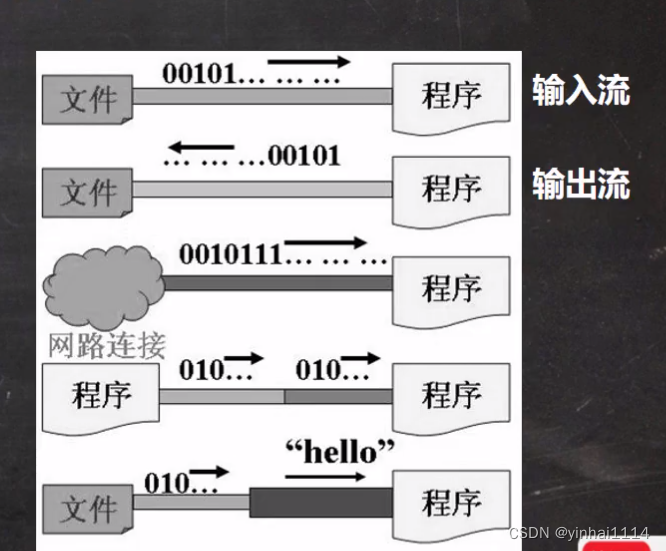
流的分类
按操作数据单位不同分为:字节流(8 bit),字符流(按字符,对应几个字节根据编码决定大小)
按数据流的流向不同分为:输入流,输出流
按流的角色的不同分为:节点流,处理流/包装流

1) Java的I0流共涉及40多个类,实际上非常规则,都是从如上4个抽象基类派生的。
2)由这四个类派生出来的子类名称都是以其父类名作为子类名后缀。

二、节点流
1.字节节点FileInputStream和FileOutputStream
1.文件字节输入流FileInputStream
InputStream抽象类是所有类字节输入流的超类
InputStream 常用的子类
1. FileInputStream:文件输入流
2. BufferedInputStream:缓冲字节输入流
3. ObjectInputStream:对象字节输入流

public class FileInputStream_ {
public static void main(String[] args) {
}
@Test
public void readFile01() {
String filePath = "e:\\hello.txt";
FileInputStream fileInputStream = null;
int readDate = 0;
try {
fileInputStream = new FileInputStream(filePath);
//如何返回-1,表示读取完毕
while ((readDate = fileInputStream.read()) != -1) {
System.out.print((char) readDate);
}
} catch (IOException e) {
e.printStackTrace();
} finally {
try {
fileInputStream.close();
} catch (Exception e) {
e.printStackTrace();
}
}
}
@Test
public void readFile02() {
String filePath = "e:\\hello.txt";
FileInputStream fileInputStream = null;
int readDate = 0;
byte[] buf = new byte[8];
int readLen = 0;
try {
fileInputStream = new FileInputStream(filePath);
//如何返回-1,表示读取完毕
while ((readLen = fileInputStream.read(buf)) != -1) {
System.out.print(new String(buf, 0, readLen));
}
} catch (IOException e) {
e.printStackTrace();
} finally {
try {
fileInputStream.close();
} catch (Exception e) {
e.printStackTrace();
}
}
}
}
2.文件字节输出流FileOutputStream

public class FileOutputStream01 {
public static void main(String[] args) {
}
/**
* 演示使用FileOutputStream 将数据写到文件中,
* 如果该文件不存在,则创建该文件
*/
@Test
public void writeFile() {
//创建 FileOutputStream对象
String filePath = "e:\\a.txt";
FileOutputStream fileOutputStream = null;
try {
//得到 FileOutputStream对象 对象
//1. new FileOutputStream(filePath) 创建方式,当写入内容是,会覆盖原来的内容
//2. new FileOutputStream(filePath, true) 创建方式,当写入内容是,是追加到文件后面
fileOutputStream = new FileOutputStream(filePath,true);
//写入一个字节
fileOutputStream.write('H');//
//写入字符串
String str = "hello,world!";
//str.getBytes() 可以把 字符串-> 字节数组
//fileOutputStream.write(str.getBytes());
/*
write(byte[] b, int off, int len) 将 len字节从位于偏移量 off的指定字节数组写入此文件输出流
*/
fileOutputStream.write(str.getBytes(), 0, str.length());
} catch (IOException e) {
e.printStackTrace();
} finally {
try {
fileOutputStream.close();
} catch (IOException e) {
e.printStackTrace();
}
}
}
}
3.使用FileInput和FileOutput完成文件拷贝
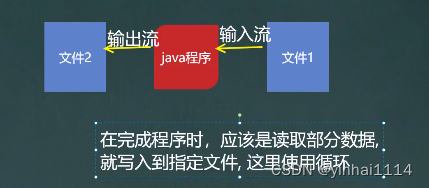
public class FileCopy_ {
public static void main(String[] args) {
String filePath = "e:\\test\\miku.jpg";
String destFilePath = "e:\\\\mikucopy.jpg";
//将该文件复制到e:\\miku.jpg
FileInputStream fileInputStream =null;
FileOutputStream fileOutputStream =null;
try {
fileInputStream = new FileInputStream(filePath);
fileOutputStream = new FileOutputStream(destFilePath);
//定义一个字节数组提高读取效率
byte[] buf = new byte[1024];
int readLen = 0;
while ((readLen = fileInputStream.read(buf)) != -1){
//读取到后就写入文件
fileOutputStream.write(buf,0,readLen);//readLen接受到的是当前读取的长度
//fileOutputStream.write(buf);//不能使用该方法,会导致及使不够也会抓到1024的长度的内容
}
System.out.println("拷贝完成");
} catch (IOException e) {
e.printStackTrace();
}finally {
try {
//关闭输入流和输出流
if(fileInputStream != null){
fileInputStream.close();
}
if(fileOutputStream != null){
fileOutputStream.close();
}
} catch (IOException e) {
e.printStackTrace();
}
}
}
}

2.字符节点流FileReader和FileWriter
FileReader和FileWriter 是字符流,即按照字符来操作io

FileReader常用方法:
1) new FileReader(File/String)
2) read:每次读取单个字符,返回该字符,如果到文件末尾返回-1
3) read(char[]):批量读取多个字符到数组,返回读取到的字符数,如果到文件末尾返回-1
相关API:
1) new String(char[]):将char[]转换成String
2) new String(char[],off,len):将char[的指定部分转换成String
FileReader应用案例
public class FileReader_ {
public static void main(String[] args) {
}
/**
* 单个字符读取文件
*/
@Test
public void readFile01() {
String filePath = "e:\\test\\story.txt";
FileReader fileReader = null;
int data = 0;
//1. 创建FileReader对象
try {
fileReader = new FileReader(filePath);
//循环读取 使用read, 单个字符读取
while ((data = fileReader.read()) != -1) {
System.out.print((char) data);
}
} catch (IOException e) {
e.printStackTrace();
} finally {
try {
if (fileReader != null) {
fileReader.close();
}
} catch (IOException e) {
e.printStackTrace();
}
}
}
/**
* 字符数组读取文件
*/
@Test
public void readFile02() {
System.out.println("~~~readFile02 ~~~");
String filePath = "e:\\story.txt";
FileReader fileReader = null;
int readLen = 0;
char[] buf = new char[8];
//1. 创建FileReader对象
try {
fileReader = new FileReader(filePath);
//循环读取 使用read(buf), 返回的是实际读取到的字符数
//如果返回-1, 说明到文件结束
while ((readLen = fileReader.read(buf)) != -1) {
System.out.print(new String(buf, 0, readLen));
}
} catch (IOException e) {
e.printStackTrace();
} finally {
try {
if (fileReader != null) {
fileReader.close();
}
} catch (IOException e) {
e.printStackTrace();
}
}
}
}

FileWriter常用方法:
1) new FileWriter(File/String) : 覆盖模相当于流的指针在首端
2) new FileWriter(File/String.true) :追加模式,相当于流的指针在尾端
3) write(int):写入单个字符
4) write(char[]):写入指定数组
5) write(charD,offlen):写入指定数组的指定部分
6) write (string) :写入整个字符串
7) write(string,off,len):写入字符串的指定部分
相关API: String类: toCharArray:将String转换成char[]
注意:FileWriter使用后,必须要关闭(close)或刷新(flush), 否则写入不到指定的文件!
public class FileWriter_ {
public static void main(String[] args) {
String filePath = "e:\\note.txt";
//创建FileWriter对象
FileWriter fileWriter = null;
char[] chars = {'a', 'b', 'c'};
try {
fileWriter = new FileWriter(filePath);//默认是覆盖写入
// 3) write(int):写入单个字符
fileWriter.write('H');
// 4) write(char[]):写入指定数组
fileWriter.write(chars);
// 5) write(char[],off,len):写入指定数组的指定部分
fileWriter.write("韩顺平教育".toCharArray(), 0, 3);
// 6) write(string):写入整个字符串
fileWriter.write(" 你好北京~");
fileWriter.write("风雨之后,定见彩虹");
// 7) write(string,off,len):写入字符串的指定部分
fileWriter.write("上海天津", 0, 2);
//在数据量大的情况下,可以使用循环操作.
} catch (IOException e) {
e.printStackTrace();
} finally {
try {
//fileWriter.flush();
//关闭文件流,等价 flush() + 关闭
fileWriter.close();
//对应FileWriter , 一定要关闭流,或者flush才能真正的把数据写入到文件
//老韩看源码就知道原因.
/*
看看代码
private void writeBytes() throws IOException {
this.bb.flip();
int var1 = this.bb.limit();
int var2 = this.bb.position();
assert var2 <= var1;
int var3 = var2 <= var1 ? var1 - var2 : 0;
if (var3 > 0) {
if (this.ch != null) {
assert this.ch.write(this.bb) == var3 : var3;
} else {
this.out.write(this.bb.array(), this.bb.arrayOffset() + var2, var3);
}
}
this.bb.clear();
}
*/
} catch (IOException e) {
e.printStackTrace();
}
}
System.out.println("程序结束...");
}
}
三、处理流
1.基本介绍
1)节点流可以从一个特定的数据源读写数据,如FileReader、 FileWriter [源码]

2)处理流(也叫包装流)是“连接”在已存在的流(节点流或处理流)之上,为程序提供更为强大的读写功能,如BufferedReader. BufferedWriter [源码]



2.节点流和处理流的区别和联系
1)节点流是底层流/低级流,直接跟数据源相接。
2)处理流(包装流)包装节点流,既可以消除不同节点流的实现差异,也可以提供更方便的方法来完成输入输出。(面向对象,存进去后就只调用BufferedReader即可)
3)处理流(也叫包装流)对节点流进行包装,使用了修饰器设计模式,不会直接与数据源相连(模拟修饰器设计模式)
处理流的功能主要体现在以下两个方面:
1)性能的提高:主要以增加缓冲的方式来提高输入输出的效率。
2)操作的便捷:处理流可能提供了一系列便捷的方法来一次输入输出大批量的数据,使用更加灵活方便
public class Test_ {
public static void main(String[] args) {
BufferedReader_ bufferedReader = new BufferedReader_(new FileReader_());
BufferedReader_ bufferedReader1 = new BufferedReader_(new StringReader_());
bufferedReader.readFile(5);
bufferedReader.readString(5);
}
}
public class BufferedReader_ extends Reader_{
private Reader_ reader_;
public BufferedReader_(Reader_ reader_) {
this.reader_ = reader_;
}
//让方法更灵活多次读取
public void readFile(int num){
for (int i = 0; i < num; i++) {
reader_.readFile();
}
}
public void readString(int num){
for (int i = 0; i < num; i++) {
reader_.readString();
}
}
}
public abstract class Reader_ {//抽象类
public void readString(){
}
public void readFile(){
}
}
public class StringReader_ extends Reader_{
public void readString(){
}
}
public class FileReader_ extends Reader_{
public void readFile(){
}
}
3.字符处理流BufferedReader和BufferedWriter
BufferedReader
BufferedReader和BufferedWriter属于字符流,是按照字符来读取数据的关闭时处理流,只需要关闭外层流印可
1)使用BufferedReader读取文本文件,并显示在控制台
public class BufferedReader_ {
public static void main(String[] args) throws Exception {
String filePath = "e:\\test\\BufferedReader_.java";
//创建bufferedReader
BufferedReader bufferedReader = new BufferedReader(new FileReader(filePath));
//读取
String line; //按行读取, 效率高
//说明
//1. bufferedReader.readLine() 是按行读取文件
//2. 当返回null 时,表示文件读取完毕
while ((line = bufferedReader.readLine()) != null) {
System.out.println(line);
}
//关闭流, 这里注意,只需要关闭 BufferedReader ,因为底层会自动的去关闭 节点流
//FileReader。
/*
public void close() throws IOException {
synchronized (lock) {
if (in == null)
return;
try {
in.close();//in 就是我们传入的 new FileReader(filePath), 关闭了.
} finally {
in = null;
cb = null;
}
}
}
*/
bufferedReader.close();
}
}

BufferedWriter
public class BufferedWriter_ {
public static void main(String[] args) throws IOException {
String filePath = "e:\\test\\testBufferedWriter_.txt";
//创建BufferedWriter
//说明:
//1. new FileWriter(filePath, true) 表示以追加的方式写入
//2. new FileWriter(filePath) , 表示以覆盖的方式写入
BufferedWriter bufferedWriter = new BufferedWriter(new FileWriter(filePath/*,true*/));
bufferedWriter.write("hello, 韩顺平教育!");
bufferedWriter.newLine();//插入一个和系统相关的换行
bufferedWriter.write("hello2, 韩顺平教育!");
bufferedWriter.newLine();
bufferedWriter.write("hello3, 韩顺平教育!");
bufferedWriter.newLine();
//说明:关闭外层流即可 , 传入的 new FileWriter(filePath) ,会在底层关闭
bufferedWriter.close();
}
} 
使用BufferedReader和BufferedWriter完成拷贝
public class BufferedCopy_ {
public static void main(String[] args) {
//Buffered是字符流 所以不要去操作二进制文件[声音,视频,doc,pdf等等]
String srcFilePath = "e:\\test\\story.txt";
String destFilePath = "e:\\test\\testBufferedCopy.txt";
String line;
BufferedReader bufferedReader = null;
BufferedWriter bufferedWriter = null;
try {
bufferedReader = new BufferedReader(new FileReader(srcFilePath));
bufferedWriter = new BufferedWriter(new FileWriter(destFilePath));
//读取写入 readLine是读取一行的内容,但是没有换行
while ((line = bufferedReader.readLine()) != null) {
//每读取一行就写入
bufferedWriter.write(line);
bufferedWriter.newLine();
}
} catch (IOException e) {
e.printStackTrace();
} finally {
try {
if (bufferedReader != null) {
bufferedReader.close();
}
if (bufferedWriter != null) {
bufferedWriter.close();
}
} catch (IOException e) {
e.printStackTrace();
}
}
}
}

4.字节处理流BufferedInputStream和BufferedOutputStream
BufferedInputStream是字节流在创建BufferedInputStream会创建一个内部缓冲区数组.
BufferedOutputStream是字节流,实现缓冲的输出流,可以将多个字节写入底层输出流中,而不必对每次字节写入调用底层系统
public class BufferedCopy02 {
public static void main(String[] args) {
// String srcFilePath = "e:\\Koala.jpg";
// String destFilePath = "e:\\hsp.jpg";
// String srcFilePath = "e:\\0245_韩顺平零基础学Java_引出this.avi";
// String destFilePath = "e:\\hsp.avi";
String srcFilePath = "e:\\a.java";
String destFilePath = "e:\\a3.java";
//创建BufferedOutputStream对象BufferedInputStream对象
BufferedInputStream bis = null;
BufferedOutputStream bos = null;
try {
//因为 FileInputStream 是 InputStream 子类
bis = new BufferedInputStream(new FileInputStream(srcFilePath));
bos = new BufferedOutputStream(new FileOutputStream(destFilePath));
//循环的读取文件,并写入到 destFilePath
byte[] buff = new byte[1024];
int readLen = 0;
//当返回 -1 时,就表示文件读取完毕
while ((readLen = bis.read(buff)) != -1) {
bos.write(buff, 0, readLen);
}
System.out.println("文件拷贝完毕~~~");
} catch (IOException e) {
e.printStackTrace();
} finally {
//关闭流 , 关闭外层的处理流即可,底层会去关闭节点流
try {
if(bis != null) {
bis.close();
}
if(bos != null) {
bos.close();
}
} catch (IOException e) {
e.printStackTrace();
}
}
}
}四、对象流
看一个需求
1.将int num = 100这个int数据保存到文件中,注意不是100数字,而是int 100,并且,能够从文件直接恢复int 100
2.将Dog dog = new Dog(”小黄”, 3)这个dog对象保存到文件中,并且能够从文件恢复,
3.上面的要求, 就是能够将基本数据类型或者对象进行序列化和反序列化操作
序列化和反序列化
1.序列化就是在保存数据时,保存数据的值和数据类型
2.反序列化就是在恢复数据时,恢复数据的值和数据类型
3.需要让某个对象支持序列化机制,则必须让其类是可序列化的,为了让某个类是可序列化的,该类必须实现如下两个接口之-:
Serializable //这是一 个标记接口(推荐使用该接口)
Externalizable //该接口有两个方法需要实现

功能:提供了对基本类型或对象类型的序列化和反序列化的方法
1. ObjectOutputStream 提供序列化功能
2. ObjectInputStream 提供反序列化功能

1. ObjectOutputStream 序列化
Dog类需要放在可以引用的位置 不然反序列化调用不到
public class ObjectOutStream_ {
public static void main(String[] args) throws Exception {
//序列化后,保存的文件格式,不是存文本,而是按照他的格式来保存
String filePath = "e:\\test\\objectData.dat";
ObjectOutputStream oos = new ObjectOutputStream(new FileOutputStream(filePath));
//序列化数据到 e:\data.dat
oos.writeInt(100);// int -> Integer (实现了 Serializable)
oos.writeBoolean(true);// boolean -> Boolean (实现了 Serializable)
oos.writeChar('a');// char -> Character (实现了 Serializable)
oos.writeDouble(9.5);// double -> Double (实现了 Serializable)
oos.writeUTF("韩顺平教育");//String(实现了 Serializable)
//保存一个dog对象
oos.writeObject(new Dog("旺财", 10, "日本", "白色"));
oos.close();
System.out.println("数据保存完毕(序列化形式)");
}
}
class Dog implements Serializable {
private String name;
private int age;
private String form;
private String color;
public Dog(String name, int age, String form, String color) {
this.name = name;
this.age = age;
this.form = form;
this.color = color;
}
}
2. ObjectInputStream 反序列化
public class ObjectInputStream_ {
public static void main(String[] args) throws IOException, ClassNotFoundException {
//指定反序列化的文件
String filePath = "e:\\test\\objectData.dat";
ObjectInputStream ois = new ObjectInputStream(new FileInputStream(filePath));
//读取
//1. 读取(反序列化)的顺序需要和你保存数据(序列化)的顺序一致
//2. 否则会出现异常
System.out.println(ois.readInt());
System.out.println(ois.readBoolean());
System.out.println(ois.readChar());
System.out.println(ois.readDouble());
System.out.println(ois.readUTF());
//dog 的编译类型是 Object , dog 的运行类型是 Dog
Object dog = ois.readObject();
System.out.println("运行类型=" + dog.getClass());
System.out.println("dog信息=" + dog);//底层 Object -> Dog
//这里是特别重要的细节:
//1. 如果我们希望调用Dog的方法, 需要向下转型
//2. 需要我们将Dog类的定义,放在到可以引用的位置,Dog类公有化
Dog dog2 = (Dog)dog;
System.out.println(dog2.getName()); //旺财..
//关闭流, 关闭外层流即可,底层会关闭 FileInputStream 流
ois.close();
}
}

3.注意事项和细节说明
1)读写顺序要一致
2)要求实现序列化或反序列化对象,需要实现Serializable
3)序列化的类中建议添加SerialVersionUID,为了提高版本的兼容性

4)序列化对象时,默认将里面所有属性都进行序列化,但除了static或transient修饰的成员
5)序列化对象时,要求里面属性的类型也需要实现序列化接口

6)序列化具备可继承性,也就是如果某类已经实现了序列化,则它的所有子类也已经默认实现了序列化
五、标准输入输出流

public class InputAndOutput {
public static void main(String[] args) {
//System 类 的 public final static InputStream in = null;
// System.in 编译类型 InputStream
// System.in 运行类型 BufferedInputStream
// 表示的是标准输入 键盘
System.out.println(System.in.getClass());
//1. System.out public final static PrintStream out = null;
//2. 编译类型 PrintStream
//3. 运行类型 PrintStream
//4. 表示标准输出 显示器
System.out.println(System.out.getClass());
//传统方法System.out.println(); 是使用out对象将数据输出到显示器
System.out.println("hello, 韩顺平教育~");
//传统的方法,Scanner是从标准输入键盘接收数据
Scanner scanner = new Scanner(System.in);
System.out.println("输入内容");
String next = scanner.next();
System.out.println("next=" + next);
}
}六、转换流
1.引入
public class CodeQuestion {
public static void main(String[] args) throws IOException {
//读取e:\\a.txt 文件到程序
//思路
//1. 创建字符输入流 BufferedReader [处理流]
//2. 使用 BufferedReader 对象读取a.txt
//3. 默认情况下,读取文件是按照 utf-8 编码,但可能不一定是utf-8编码,就会出现乱码情况
String filePath = "e:\\a.txt";
BufferedReader br = new BufferedReader(new FileReader(filePath));
String s = br.readLine();
System.out.println("读取到的内容: " + s);
br.close();
}
} 
2.介绍
1. InputStreamReader:Reader的子类,可以将InputStream(字节流)包装成(转换)成Reader(字符流)

2. OutputStreamWriter:Writer的子类,实现将OutputStream(字节流)包装成Writer(字符流)

3.当处理纯文本数据时,如果使用字符流效率更高,并且可以有效解决中文问题,所以建议将字节流转换成字符流
4.可以在使用时指定编码格式(比如utf-8, gbk, gb2312, IS08859-1等)
3.InputStreamReader使用
public class InputStreamReader_ {
public static void main(String[] args) throws IOException {
String filePath = "e:\\a.txt";
//解读
//1. 把 FileInputStream 转成 InputStreamReader
//2. 指定编码 gbk
//InputStreamReader isr = new InputStreamReader(new FileInputStream(filePath), "gbk");
//3. 把 InputStreamReader 传入 BufferedReader
//BufferedReader br = new BufferedReader(isr);
//将2 和 3 合在一起
BufferedReader br = new BufferedReader(new InputStreamReader(
new FileInputStream(filePath), "gbk"));
//4. 读取
String s = br.readLine();
System.out.println("读取内容=" + s);
//5. 关闭外层流
br.close();
}
}4.OutputStreamWriter的使用
public class OutputStreamWriter_ {
public static void main(String[] args) throws IOException {
String filePath = "e:\\test\\nihao.txt";
String charSet = "utf-8";
BufferedWriter bufferedWriter = new BufferedWriter(new OutputStreamWriter(new FileOutputStream(filePath), charSet));
bufferedWriter.write("hi, 你好");
bufferedWriter.close();
System.out.println("按照 " + charSet + " 保存文件成功~");
}
}

七、打印流(只有输出流,没有输入流)
1.PrintStream的使用


public class PrintStream_ {
public static void main(String[] args) throws IOException {
PrintStream out = System.out;
//在默认情况下,PrintStream 输出数据的位置是 标准输出,即显示器
/*
public void print(String s) {
if (s == null) {
s = "null";
}
write(s);
}
*/
out.print("john, hello");
//因为print底层使用的是write , 所以我们可以直接调用write进行打印/输出
out.write("韩顺平,你好".getBytes());
out.close();
//我们可以去修改打印流输出的位置/设备
//1. 输出修改成到 "e:\\f1.txt"
//2. "hello, 韩顺平教育~" 就会输出到 e:\f1.txt
//3. public static void setOut(PrintStream out) {
// checkIO();
// setOut0(out); // native 方法,修改了out
// }
System.setOut(new PrintStream("e:\\test\\f1.txt"));
System.out.println("hello, 韩顺平教育~");
}
}
2.PrintWriter的使用


public class PrintWriter_ {
public static void main(String[] args) throws IOException {
//PrintWriter printWriter = new PrintWriter(System.out);//打印到显示器 标准输出
PrintWriter printWriter = new PrintWriter(new FileWriter("e:\\f2.txt"));
printWriter.print("hi, 北京你好~~~~");
printWriter.close();//flush + 关闭流, 才会将数据写入到文件..
}
}
八、Properties类
1.引入
如下一个配置文件mysql.properties
ip = 192.168.0.13
user = root
pwd = 12345
请问编程读取ip、user 和pwd的值是多少
分析
1. 传统的方法
2. 使用Properties类可以方便实现
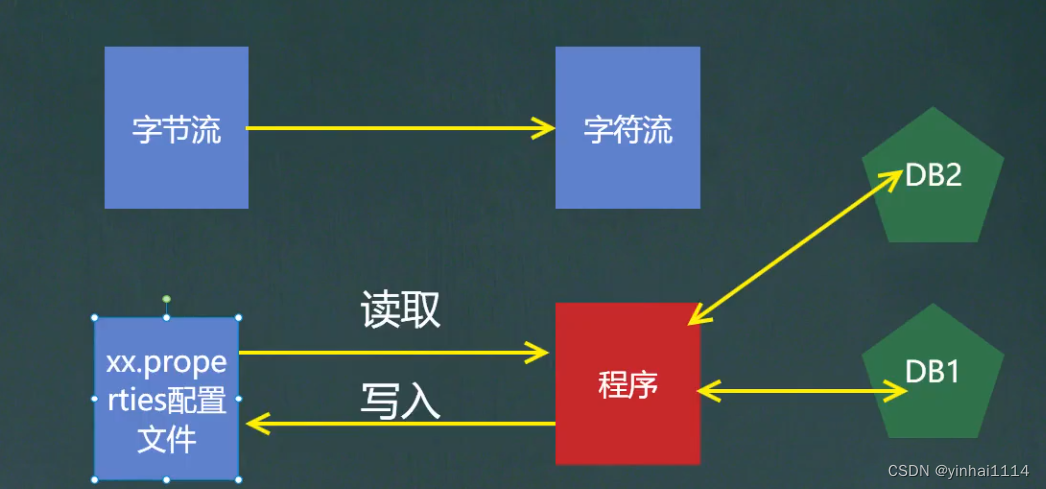
2.介绍
1)专门用于读写配置文件的集合类
配置文件的格式:
键=值
键=值
2)注意:键值对不需要有空格,值不需要用引号一起来。 默认类型是String
3) Properties的常见方法
load:加载配置文件的键值对到Properties对象
list:将数据显示到指定设备/流对象
getProperty(key):根据键获取值
setProperty(key,value);:设置键值对到Properties对象
store:将Properties中的键值对存储到配置文件,在idea中,保存信息到配置文件,如果含有中文,会存储为unicode码
3.应用
1.使用Properties类完成对mysql.properties的读取,看老师代码演示
public class Properties02 {
public static void main(String[] args) throws IOException {
//使用Properties 类来读取mysql.properties 文件
//1. 创建Properties 对象
Properties properties = new Properties();
//2. 加载指定配置文件
properties.load(new FileReader("src\\mysql.properties"));
//3. 把k-v显示控制台
properties.list(System.out);
//4. 根据key 获取对应的值
String user = properties.getProperty("user");
String pwd = properties.getProperty("pwd");
System.out.println("用户名=" + user);
System.out.println("密码是=" + pwd);
}
}2.使用Proper ties类添加key-val到新文件mysql2.properties中
3.使用Properties类完成对mysql2.properties的读取,并修改某个key-val
public class Properties03 {
public static void main(String[] args) throws IOException {
//使用Properties 类来创建 配置文件, 修改配置文件内容
Properties properties = new Properties();
//创建
//1.如果该文件没有key 就是创建
//2.如果该文件有key ,就是修改
/*
Properties 父类是 Hashtable , 底层就是Hashtable 核心方法
public synchronized V put(K key, V value) {
// Make sure the value is not null
if (value == null) {
throw new NullPointerException();
}
// Makes sure the key is not already in the hashtable.
Entry<?,?> tab[] = table;
int hash = key.hashCode();
int index = (hash & 0x7FFFFFFF) % tab.length;
@SuppressWarnings("unchecked")
Entry<K,V> entry = (Entry<K,V>)tab[index];
for(; entry != null ; entry = entry.next) {
if ((entry.hash == hash) && entry.key.equals(key)) {
V old = entry.value;
entry.value = value;//如果key 存在,就替换
return old;
}
}
addEntry(hash, key, value, index);//如果是新k, 就addEntry
return null;
}
*/
properties.setProperty("charset", "utf8");
properties.setProperty("user", "汤姆");//注意保存时,是中文的 unicode码值
properties.setProperty("pwd", "888888");//底层就是hashTable,所以set就是替换K-V
//将k-v 存储文件中即可
properties.store(new FileOutputStream("src\\mysql2.properties"), "hello,world");//comments代表注释
System.out.println("保存配置文件成功~");
}
}
